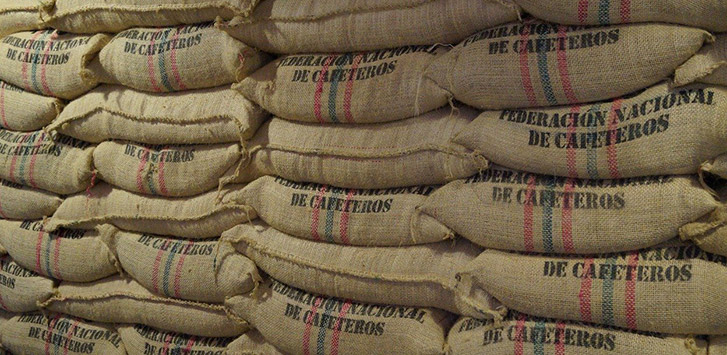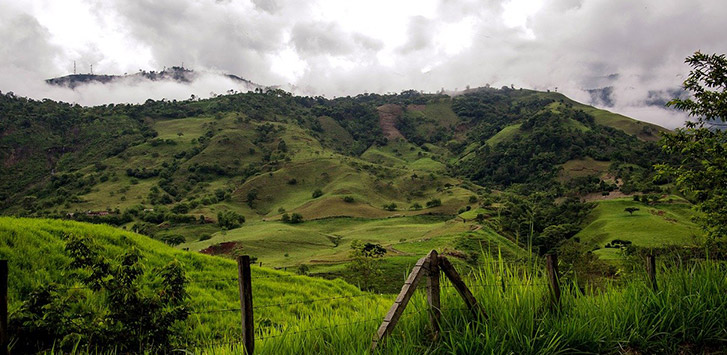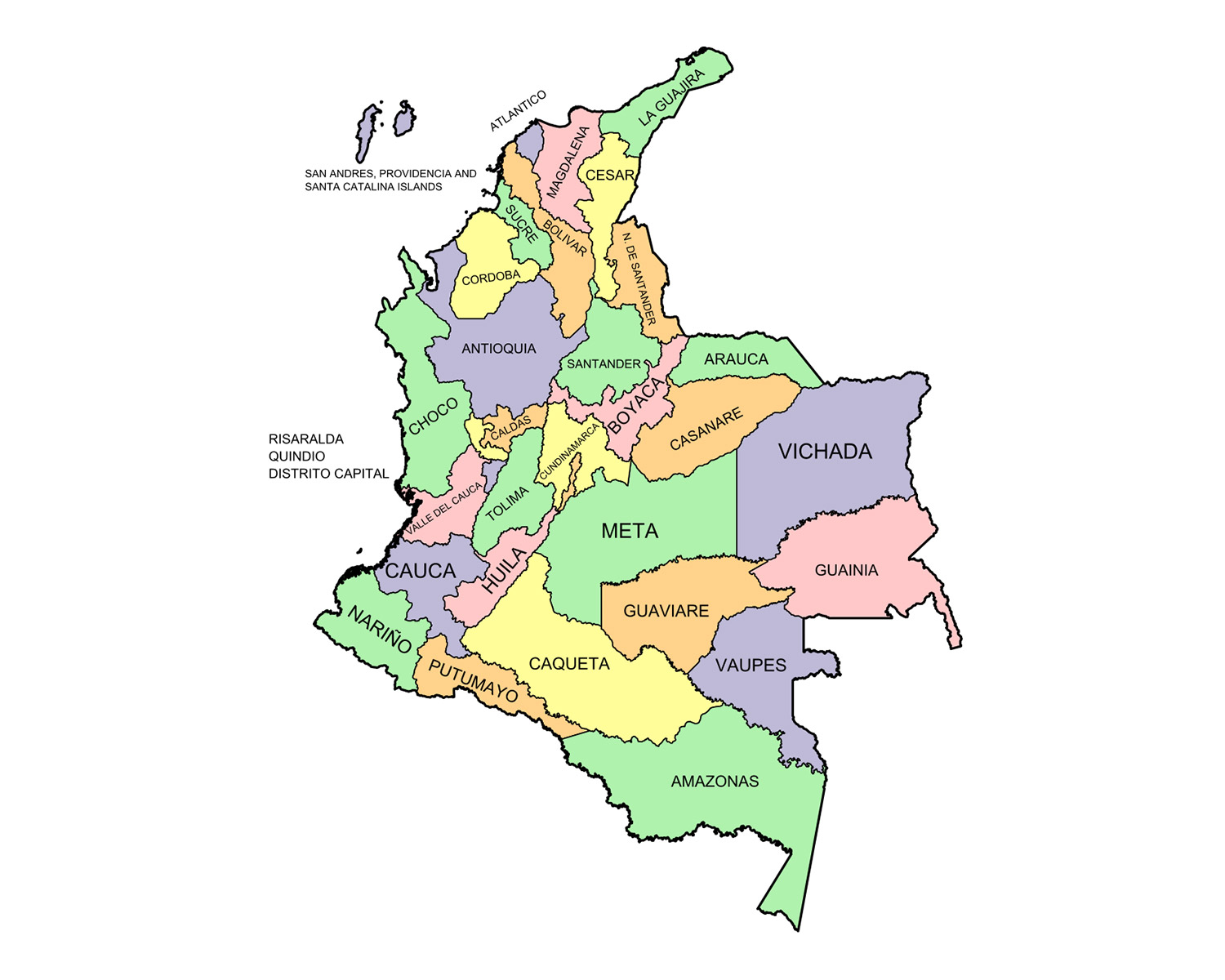
As the third-largest producer of coffee, Colombia is renowned for the coffee beans it produces with its floral hints and notes of tropical fruit. This country has been called the “richest and most diverse region on earth” with a perfect climate for growing coffee in the world.
Early History (the 1700s-1900s)
Tradition claims that Jesuit priests brought coffee to Colombia around 1723. The story goes that the priests couldn’t convince the locals to plant coffee trees, so Priest Francisco Romero told the people to plant a few trees in place of going to confession. No matter how coffee first came to Colombia, it quickly took off with its first commercial production in 1808 and the first international export in 1835 to the United States.
Coffee production, largely, began in the east in areas such as Santander, North Santander, Cundinamarca, Antioquia, and Caldas. With the financial upset of large landowners in the mid-1800s, due to the drastic decrease in market value and need for cattle, leather, and tobacco, the coffee industry spread to the western regions. At the same time, a new model to develop coffee exports was created, which furthered the success of coffee in the west.
Modern Production (the 1900 – Present Day)
The 1900s to the present day saw much change for the coffee farming industry in Colombia.
1927 – The Federación Nacional de Cafeteros de Colombia (National Federation of Coffee Growers of Colombia or FNC) was founded to confront the logistical and commercial difficulties that the small farms experienced, giving growers more power.
1930 – Colombia became the second largest coffee producer in the world. With land reforms challenging the inequality of land ownership, small coffee-growing farms took over the industry.
1958 – In a battle to establish the Colombian coffee brand, FNC created the iconic Juan Valdez advertisement. This ad campaign continues to today, picturing a country, coffee farmer carrying coffee on a mule. Juan Valdez distinguishes between 100% Colombian coffee beans and coffee blends from other countries, such as Mexico and Guatemala.
1990 – The 1990s saw a turn for the worse in the Colombian coffee industry. At the time, 20% of coffee farmers were unable to make a profit, which caused a mass migration to urban areas for work.
2011 – UNESCO declared the “Coffee Cultural Landscape” of Colombia a World Heritage site.
2018 – Coffee prices in Colombia were at a 12-year low. FNC asked big-name brands, like Starbucks, to step-up and pay them a fairer price for their coffee beans.
2020 – The coffee landscape is looking up in Colombia. Farmers are beginning to make a profit, again, but other enemies of the coffee industry are appearing, including climate change.
National Federation of Coffee Growers of Colombia (FNC)
The FNC is a non-profit, business association founded to promote the production and exportation of Colombian coffee. It represents more than 500,000 producers, mainly small, family-owned farms.
The FNC has created a lasting impact through research and development in the production of coffee by outsourcing to local universities through grants and federation-sponsored research institutes. While the FNC strives towards profit and having a positive social impact, its main focus is on protecting the Colombian coffee industry.
Effects of Climate Change on Coffee Production
Colombian farmers almost exclusively grow Arabica coffee beans, which are particularly vulnerable to climate change. The rising temperatures and unpredictable rainfall leave the coffee beans increasingly susceptible to coffee rust fungus and the coffee berry borer insect. At the same time, soil and water contamination have increased due to the overuse of pesticides.
Growing Regions

Colombian coffee beans’ high quality comes from the near-perfect climate for growth. Gathering nutrients from volcanic soil, high elevation, consistent rainfall, and a temperature that never falls below freezing, the beans are given the chance to thrive. The numerous banana trees provide shade while allowing the perfect amount of sunlight.
There are three main growing regions: North, South, and Central.

The North boasts a warmer climate with lower altitudes in areas like the Sierra Nevada de Santa Marta, Perija mountains, and Santander. One of the varieties we have in from the North is our fair trade Organic Sierra Nevada that is fruity with a light, bouncy body with subtle chocolate undertones.
The other northern variety we have in stock hails from the Santander department of the country called the El Gato. This variety is handpicked, washed, and milled by the Northeastern Colombian Coffee Cooperative and boasts a slightly creamy mouthfeel with notes of sweet orange, slight nutty almond, and a sweet vanilla finish.
The South is closer to the equator with higher altitudes in areas like Narino, Cauca, Huila, and South of Tolima. We have a Huila-grown variety called the Supremo, which has great balance and yet is rich, nutty, and sweet; the longer it sat in the cup the sweeter it got.
The Central region is made-up of Caldas, Quindio, Risaralda, and Tolima (the Colombian coffee-growing axis). This area was declared a World Heritage site by UNESCO.
Harvesting Strategies

Since most coffee growing farms are small, they can pay closer attention to the coffee beans during harvesting seasons. Each bean is handpicked from the tree, leaving the underripe beans for later and the overripe alone.
Colombian Coffee Flavor Profile
Most of the beans grown in Colombia are Arabica, which means they have a superior flavor profile. Arabica beans are characterized by sweetness, lightness, and strong acidity. The wet-processing that the beans undergo fully brings out the best attributes of Colombian beans, making the flavor that much more clean, bright and fruity.
While the exact flavors change based on where the beans grow, in general, Colombian coffee tasting notes boast chocolate, nuts, herbs, fruit, and a citrusy acidity. They produce a mild and well-balanced cup of coffee with a medium, silky body, tropical notes, and fruity, spicy aroma.
Roasting Tips
Colombian coffee beans are great for every roast. They each just highlight a different aspect. Light roasts bring out the bright acidity, citrus, and fruit undertones and notes of cocoa and caramel. Medium roasts and dark roasts produce an intense flavor and rich aroma.
Brewing Methods
The best brewing methods for Colombian coffee are, generally, either an espresso or Aeropress. The espresso highlights the full-body, rich aroma, and light acidity. It has a pleasant aftertaste without being overly bitter.
The Aeropress creates a balanced taste with a smooth, full-body. When brewing, remember that the more grounds you use, the stronger the coffee will taste. Colombian coffee is great black, too, for those who don’t enjoy fancy coffee.
If you’re in Colombia, though, you have to try the traditional Tinto Coffee, or “inky water”. Available on almost every street, Tinto Coffee is a thicker, concentrated coffee made with commodity-quality beans and served in small cups.
Conclusion
Colombian coffee is unique in its flavor profile because of its perfect growing climate, the harvesting process, and wet-processing. Through the work of the FNC, Colombian small farmers have been able to produce some of the best, most sought-after coffee beans that are clean, bright, and full of flavor.